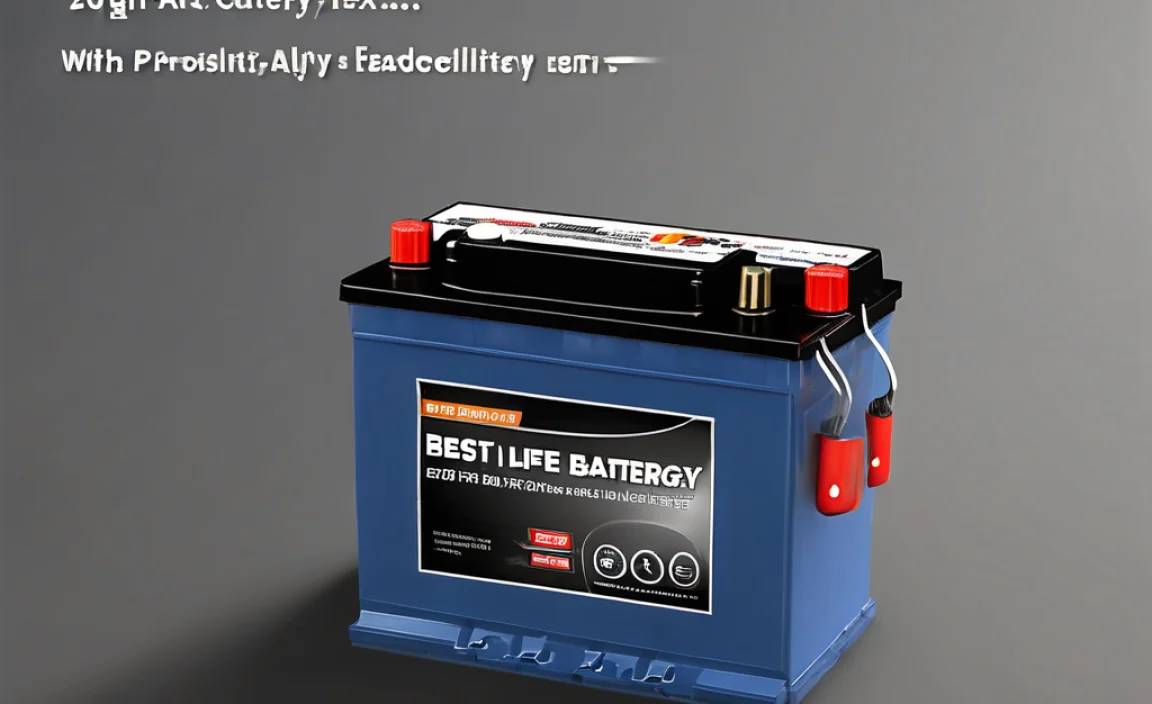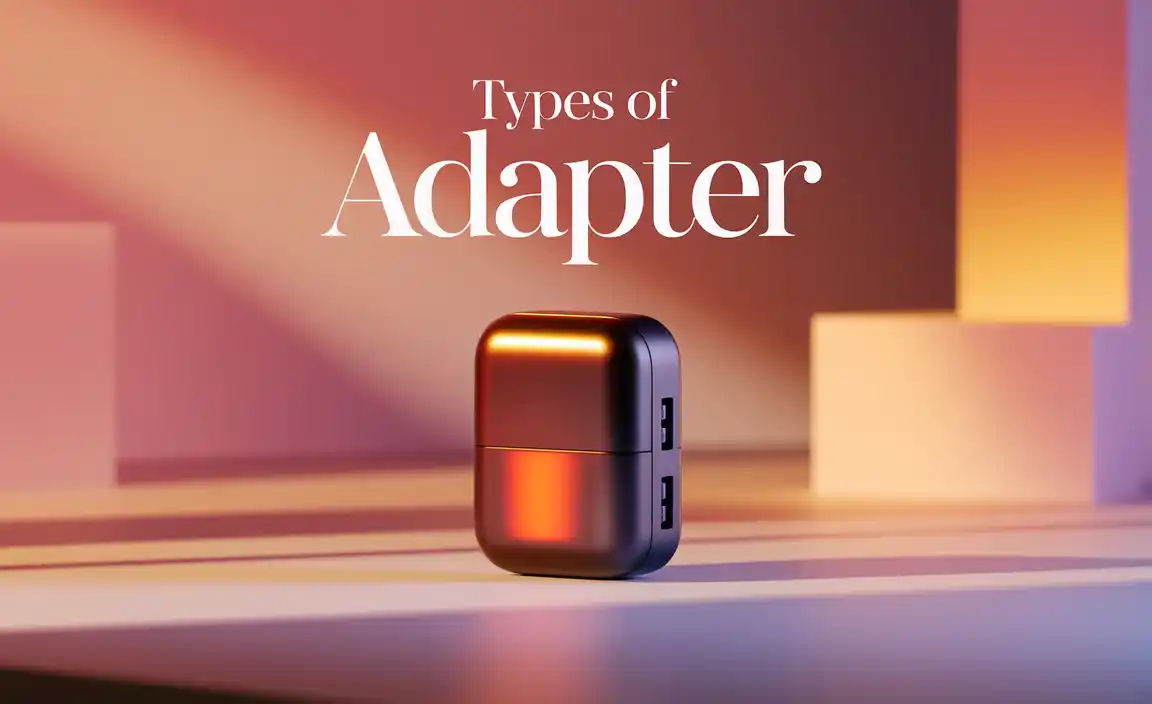Kodak Rechargeable Batteries offer reliable, long-lasting power for your devices, ensuring you’re never caught short. They’re a smart, eco-friendly choice for everything from cameras to everyday gadgets, providing consistent performance.
Kodak Rechargeable Batteries: Proven Power for All Your Devices
Ever been in the middle of capturing a precious moment, only for your camera to blink out? Or maybe your favorite gadget died at the worst possible time. It’s a common frustration, but the solution is simpler than you think. Kodak rechargeable batteries are here to keep your devices running, offering consistent power you can count on. This guide will show you why they’re a smart choice and how to get the most out of them, making sure your photography and daily tech life stays powered up and worry-free.
We’ll cover everything you need to know, from the benefits of going rechargeable to how Kodak’s offerings stand out. You’ll learn where to use them, how to charge them, and why they’re a trusted name in power solutions.
Why Choose Rechargeable Batteries?
Switching to rechargeable batteries is a brilliant move for your wallet and the planet. Think about how many disposable batteries you go through in a year. That adds up fast, both in terms of cost and waste. Rechargeable batteries, like those from Kodak, are designed to be used hundreds, even thousands, of times. This means fewer trips to the store and less trash ending up in landfills.
Beyond saving money and reducing waste, rechargeable batteries often provide more stable power, especially for devices that need a steady energy flow, like digital cameras. This means better performance and fewer interrupted moments.
The Kodak Rechargeable Difference
Kodak has a long history of innovation, and their rechargeable batteries are no exception. They’re built to deliver reliable power, whether you’re shooting photos all day or powering a high-drain electronic device. Kodak focuses on quality and performance, ensuring their batteries can handle the demands of modern gadgets.
What makes Kodak stand out?
- Consistent Power Output: They provide steady voltage, which is crucial for devices like digital cameras to prevent performance issues.
- Long Lifespan: Designed for many recharge cycles, offering great value over time.
- Eco-Friendly Choice: Significantly reduces waste compared to single-use batteries.
- Versatility: Available in common sizes like AA and AAA, suitable for a wide range of devices.
Where Can You Use Kodak Rechargeable Batteries?
The beauty of Kodak rechargeable batteries, especially their AA and AAA sizes, is their versatility. They fit into a wide array of devices that traditionally use alkaline batteries. Here are some popular uses:
Digital Cameras
This is where rechargeable batteries truly shine. Digital cameras, DSLRs, and point-and-shoot models can be power-hungry. Using Kodak rechargeables means you can shoot more photos and videos on a single charge, and quickly swap in fresh ones if you’re out all day. This is particularly important for professional or hobbyist photographers who need reliable power during shoots.
Wireless Peripherals
Keyboards, mice, game controllers, and other wireless devices often rely on AA or AAA batteries. Rechargeables keep these peripherals running without the constant need to replace batteries, ensuring your work or play isn’t interrupted.
Toys and Gadgets
Many children’s toys, remote controls, portable gaming devices, and even some small household appliances use these battery sizes. Keeping a set of Kodak rechargeables means you’re always ready for playtime or to power up your essential gadgets.
Flashlights and Headlamps
For outdoor adventures or emergency preparedness, reliable lighting is key. Rechargeable batteries ensure your flashlight or headlamp won’t die when you need it most, and you can recharge them between uses.
Electronic Health Devices
Some portable medical devices, like glucose meters or thermometers, also use AA or AAA batteries. Consistent power is vital for accurate readings, making rechargeables a dependable option.
Understanding Battery Types: A Quick Primer
Not all batteries are created equal. For rechargeable options, you’ll typically encounter NiMH (Nickel-Metal Hydride) and NiCd (Nickel-Cadmium) types. Kodak rechargeable batteries are predominantly NiMH, which is the modern standard for consumer electronics.
NiMH Batteries:
- Higher energy capacity than NiCd.
- No “memory effect” (explained below).
- More environmentally friendly.
- Generally the best choice for most devices.
NiCd Batteries (Less Common Now):
- Can suffer from “memory effect” – if repeatedly recharged with only partial discharge, they can lose capacity.
- Lower energy density.
- Less common in new consumer products due to environmental concerns and performance limitations.
Kodak’s focus is on providing high-performance NiMH batteries that offer the best balance of power, longevity, and environmental consideration.
The “Memory Effect”: What It Is and Why It Matters
You might hear about the “memory effect” when discussing rechargeable batteries. This is a phenomenon primarily associated with older NiCd batteries. If you only partially discharge a NiCd battery and then recharge it, it can “remember” that shallower discharge point and reduce its usable capacity over time.
Good news: Kodak rechargeable batteries are NiMH. Modern NiMH batteries have a very minimal, almost negligible, memory effect. You don’t need to worry about fully discharging them before recharging. You can top them up whenever it’s convenient without significant long-term damage to their capacity. This makes them much easier to use for everyday charging.
Choosing the Right Kodak Rechargeable Batteries
Kodak offers rechargeable batteries in the most common sizes: AA and AAA. When choosing, consider the capacity, often measured in milliampere-hours (mAh). A higher mAh rating generally means longer run time on a single charge.
For example, Kodak might offer:
- Kodak AA Rechargeable Batteries: Often with capacities ranging from 2000mAh to 2500mAh, ideal for high-drain devices like digital cameras and game controllers.
- Kodak AAA Rechargeable Batteries: Typically around 800mAh to 1000mAh, suitable for smaller devices like remote controls, mice, and some toys.
Always check the mAh rating on the package. If you frequently use devices that drain batteries quickly, opt for higher mAh options. For less power-hungry devices, a slightly lower mAh battery will still provide excellent performance and longevity.
Charging Your Kodak Rechargeable Batteries: The Right Way
To get the best performance and lifespan from your Kodak rechargeable batteries, using the right charger is essential. Kodak offers dedicated chargers designed to work optimally with their NiMH batteries.
Universal AA/AAA Battery Chargers
Most Kodak rechargeable battery kits come with, or are compatible with, universal chargers. These chargers are designed to safely charge both AA and AAA NiMH batteries. They typically have multiple slots, allowing you to charge several batteries at once.
How to Charge
- Insert Batteries: Place your Kodak rechargeable batteries into the charger slots, paying close attention to the polarity (+ and – ends). Ensure they are seated correctly.
- Plug In: Connect the charger to a power source, usually via a USB cable or a wall adapter.
- Monitor Charging: Most modern chargers have indicator lights that show the charging status (e.g., blinking red for charging, solid green for fully charged).
- Remove When Charged: While modern chargers have safety features to prevent overcharging, it’s good practice to remove batteries once they are fully charged. For NiMH batteries, this won’t cause the “memory effect.”
What to Avoid
- Using the Wrong Charger: Never use a charger designed for a different battery type (e.g., an alkaline battery charger). This can be dangerous and damage both the batteries and the charger.
- Extreme Temperatures: Charge batteries at room temperature. Avoid charging in very hot or very cold environments, as this can reduce battery life.
- Damaged Batteries: Do not attempt to charge batteries that are leaking, corroded, or physically damaged.
Understanding Battery Lifespan and Performance
Just like any battery, Kodak rechargeables have a lifespan, measured in charge cycles. A charge cycle is one complete discharge and recharge. High-quality NiMH batteries, like Kodak’s, can often withstand hundreds or even over a thousand charge cycles. This means a single set of batteries can last for many years if properly cared for.
Performance can also be affected by temperature and the demands of the device:
- Temperature: Batteries perform best at moderate temperatures (around 20°C or 68°F). Extreme heat or cold can temporarily reduce their capacity or affect their ability to deliver power.
- Device Drain: Devices that require a lot of power (like professional camera flashes) will drain batteries faster than low-drain devices (like a TV remote).
Kodak Rechargeable Batteries vs. Disposable Batteries
The debate between rechargeable and disposable batteries is an old one, but the advantages of rechargeables are increasingly clear.
| Feature | Kodak Rechargeable Batteries (NiMH) | Disposable Alkaline Batteries |
|---|---|---|
| Cost Over Time | Lower (one purchase lasts years) | Higher (frequent replacements needed) |
| Environmental Impact | Significantly Lower (reduced waste) | Higher (contributes to landfill waste) |
| Power Consistency | More Stable (especially for high-drain devices) | Voltage drops as it discharges |
| Initial Cost | Higher (battery + charger) | Lower (per pack) |
| Convenience | Requires charging, but always ready when charged | Buy and use, but can run out unexpectedly |
For most users, especially those with digital cameras or frequently used electronics, the long-term savings and environmental benefits of Kodak rechargeable batteries make them the superior choice. The initial investment in a charger and batteries is quickly recouped through savings on disposable ones.
Safety Tips for Battery Use
While Kodak rechargeable batteries are safe when used as directed, it’s always good to keep a few safety tips in mind:
- Read Instructions: Always read the manuals for both your batteries and your devices.
- Proper Insertion: Make sure batteries are inserted correctly according to the +/- markings.
- Handle with Care: Avoid dropping batteries or subjecting them to physical damage.
- Keep Away from Heat: Do not expose batteries to fire or extreme heat sources.
- Child Safety: Keep batteries out of reach of small children. Swallowing a battery can be extremely dangerous.
- Recycling: When batteries reach the end of their life, recycle them responsibly. Many electronics stores and local waste facilities offer battery recycling programs. You can find more information on proper disposal through resources like the Call2Recycle website: Call2Recycle.
Maintaining Your Kodak Rechargeable Batteries
Proper maintenance ensures your Kodak rechargeables last as long as possible and deliver peak performance.
Here’s how to keep them in top shape:
- Use a Quality Charger: As mentioned, always use a charger designed for NiMH batteries. A smart charger that detects the battery’s charge level and stops automatically is ideal.
- Store Properly: If you won’t be using the batteries for an extended period (months), store them in a cool, dry place. It’s generally recommended to store them with a partial charge (around 40-50%) for long-term storage, though modern NiMH batteries tolerate full charges well for shorter periods.
- Clean Contacts: Occasionally, gently clean the battery terminals and the device’s contacts with a soft, dry cloth or a pencil eraser. This ensures a good electrical connection.
- Avoid Deep Discharges: While not as critical for NiMH as for NiCd, consistently draining batteries completely can still reduce their overall lifespan. It’s often better to recharge them when performance starts to dip or when a device indicates low power.
Frequently Asked Questions (FAQ)
Q1: Are Kodak rechargeable batteries good for digital cameras?
A: Yes, Kodak rechargeable batteries are excellent for digital cameras. They provide consistent power, which is crucial for camera performance, and their high capacity (mAh) allows for extended shooting sessions. They are a much more cost-effective and eco-friendly choice than disposable batteries for cameras.
Q2: How many times can I recharge Kodak rechargeable batteries?
A: Kodak rechargeable NiMH batteries are designed to be recharged hundreds, often over a thousand, times. This means a single set can last for many years, providing significant value.
Q3: Do I need a special charger for Kodak rechargeable batteries?
A: You need a charger specifically designed for NiMH rechargeable batteries. Kodak offers compatible chargers. Using a charger designed for other battery types (like alkaline or NiCd) can be unsafe and damage your batteries.
Q4: What does mAh mean on a battery?
A: mAh stands for milliampere-hour. It’s a measure of battery capacity, indicating how much energy the battery can store. A higher mAh number means the battery can provide power for a longer time before needing to be recharged.
Q5: Can I leave Kodak rechargeable batteries in the charger overnight?
A: Modern smart chargers designed for NiMH batteries automatically stop charging when the batteries are full. So, yes, it’s generally safe to leave them in these types of chargers overnight without overcharging.
Q6: How should I store Kodak rechargeable batteries if I don’t use them often?
A: Store them in a cool, dry place away from direct sunlight. For very long-term storage (many months), it’s sometimes recommended to leave them with about a 40-50% charge, but they will generally hold their charge well even when fully charged for shorter periods.
Q7: Are Kodak rechargeable batteries better for the environment?
A: Absolutely. By replacing hundreds of disposable batteries over their lifespan, Kodak rechargeable batteries significantly reduce waste going to landfills, making them a much more sustainable and eco-friendly power solution.
Conclusion
Choosing Kodak rechargeable batteries is a practical, forward-thinking decision for anyone looking for reliable power for their devices. From capturing life’s moments with your digital camera to keeping your everyday gadgets running smoothly, Kodak offers a dependable and eco-conscious solution. They provide a cost-effective alternative to disposable batteries, saving you money in the long run while reducing your environmental footprint.
By understanding the benefits, using the right charger, and following simple safety and maintenance tips, you can ensure your Kodak rechargeable batteries deliver consistent, powerful performance for years to come. Make the switch today and experience the proven power and peace of mind that comes with Kodak’s commitment to quality and innovation in battery technology.



